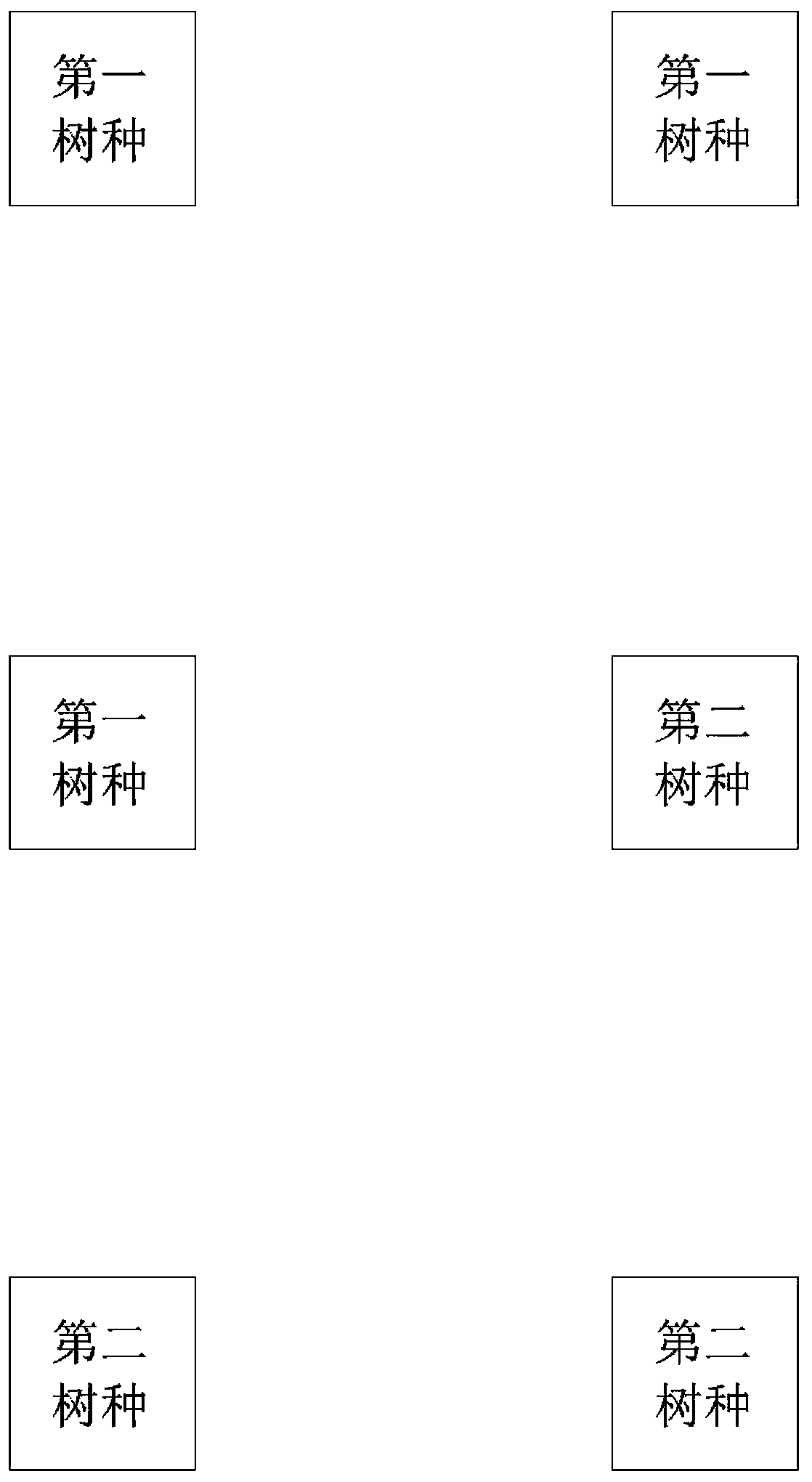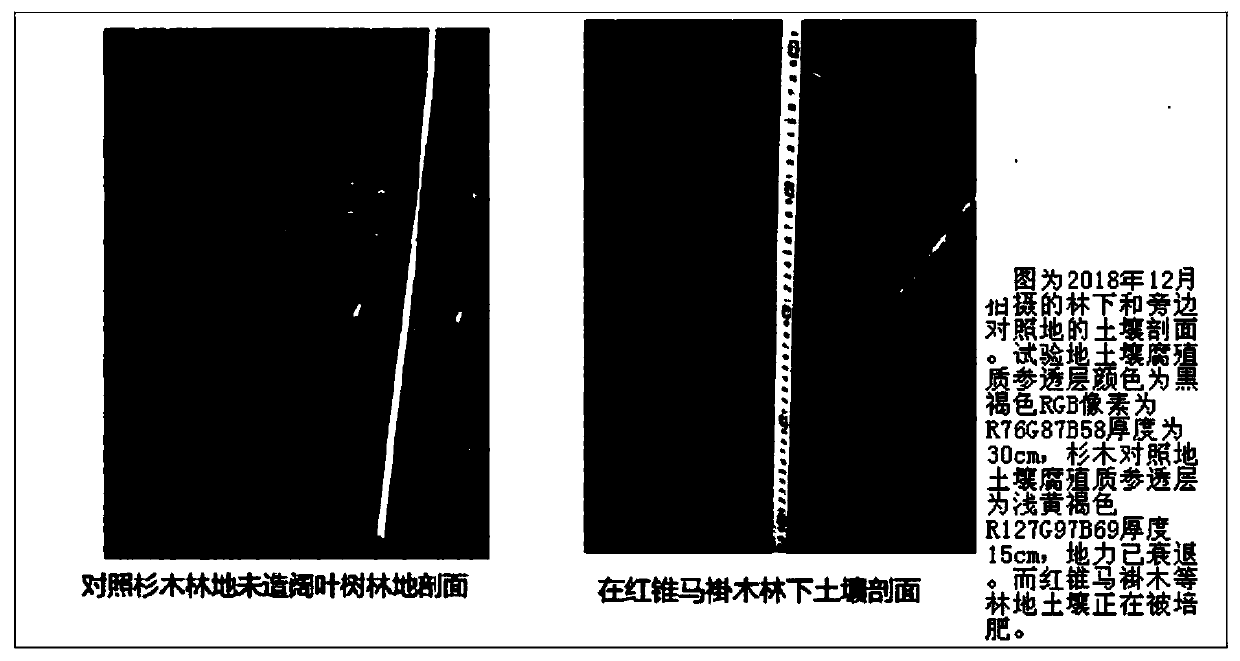High-value permanent forest cultivation technology with functions of land utilization and land maintenance
A permanent, high-value technology, applied in the field of forest cultivation, can solve problems such as low cultural landscape value, soil fertility decline, single tree species, etc.
- Summary
- Abstract
- Description
- Claims
- Application Information
AI Technical Summary
Problems solved by technology
Method used
Image
Examples
Embodiment 1
[0113] In 1999, a 39-year-old Chinese fir plantation with an area of 20 mu in Jishan Work Zone, Gekeng State-owned Forest Farm, Dehua, Fujian Province, conducted a selective felling experiment with 28-40 plants / 667m2 of high-growth value-added dominant trees. In 1999, the average DBH was 21.7 cm, and the maximum DBH was 38 cm. The three-diameter group (DBH 30-39 cm) accounted for 7.86% of dominant trees; the largest DBH in 2013 survey was 53 cm, and the largest DBH in the survey at the end of 2018 was 59.7 cm. 35 cm, the proportion of dominant trees above the three-diameter group rose to 43.14%, and there were 21 trees with a DBH above 45 cm; the volume per unit area of large trees increased from 143.91 m3 / hm2 to 261.81 m3 / hm2. This proves that: Chinese fir still has at least 30 years of growth advantage in late DBH after entering the mature age.
Embodiment 2
[0115] In 2013, the area of 09 and 03 sub-classes in the pit mouth area of the field was 94 mu, which was the fir clearcutting land, and the land type was Class Ⅲ land. The afforestation experiment of cultivating high-value permanent forest was carried out. For tree planting, the above-mentioned (1) tree species with good wood material properties, large uses, high value and good market prospects, (2) tree species with rich nutrient content in leaves, fallen leaves and rotten soil for fertilizing, (3) fast-growing and high-yielding tree species, (4) ) Tree species that can naturally plant self-renewal and self-development, (5) Tree species that have large seeds, starch-containing protein, etc. High-value permanent forests are created through the combination of multiple types of tree species, such as , red cone, oak, sweetgum, bald fir, mandarin wood, and firewood. According to the survey in 2018, the humus-infiltrated layer on the surface of the soil has changed to light da...
Embodiment 3
[0119] The small class cultivated is located in the 07 forest class, the 06 large class, and the 03 small class in Yingshan Village, Longxun Town, Dehua County, Fujian Province, with an area of 35 mu. The average temperature is 17.5°C, the lowest temperature is -5°C, and the average annual precipitation is 1673.9 mm. It belongs to the subtropical and mid-subtropical transitional climate zone. The small class planted forests in 1981; the site is humus-free or humus-penetrating light brown middle layer 3 types of land, stand diameter value-added grade B or above, and high economic, ecological and social landscape values. The cultivation techniques of permanent forests are as follows:
[0120] According to the field investigation, the forest condition of the small class site is the third type of land with poor site, and the artificial plantation of Chinese fir seedlings originates from the pure forest of Chinese fir. The forest land is beside the road, and it belongs to the ac...
PUM
 Login to View More
Login to View More Abstract
Description
Claims
Application Information
 Login to View More
Login to View More - R&D
- Intellectual Property
- Life Sciences
- Materials
- Tech Scout
- Unparalleled Data Quality
- Higher Quality Content
- 60% Fewer Hallucinations
Browse by: Latest US Patents, China's latest patents, Technical Efficacy Thesaurus, Application Domain, Technology Topic, Popular Technical Reports.
© 2025 PatSnap. All rights reserved.Legal|Privacy policy|Modern Slavery Act Transparency Statement|Sitemap|About US| Contact US: help@patsnap.com



